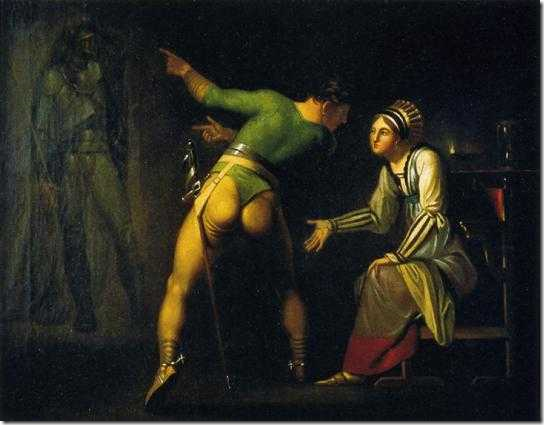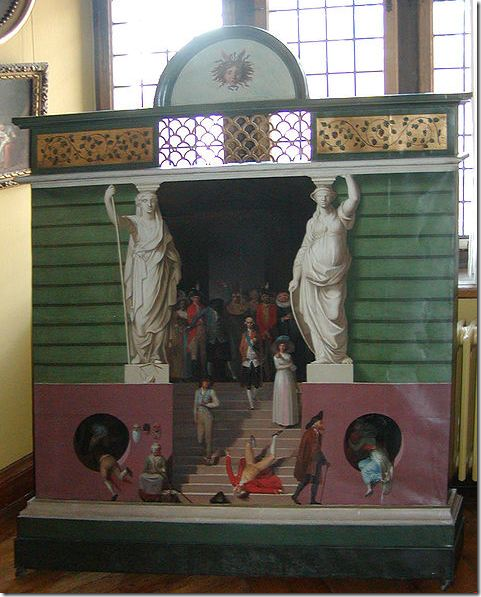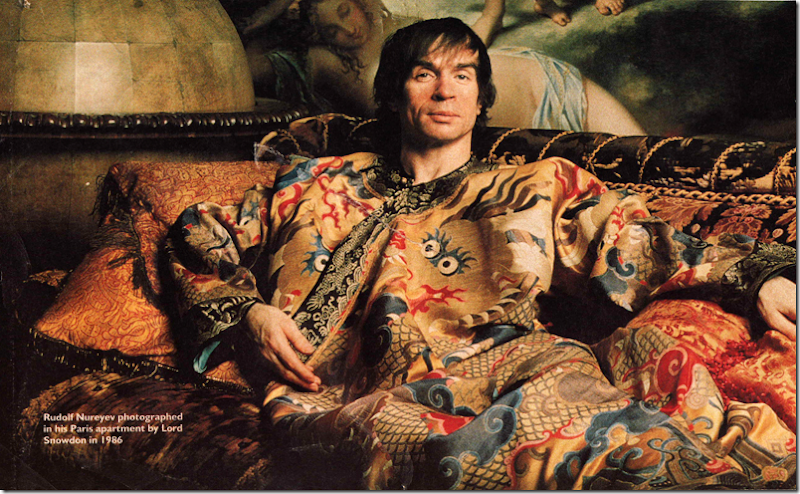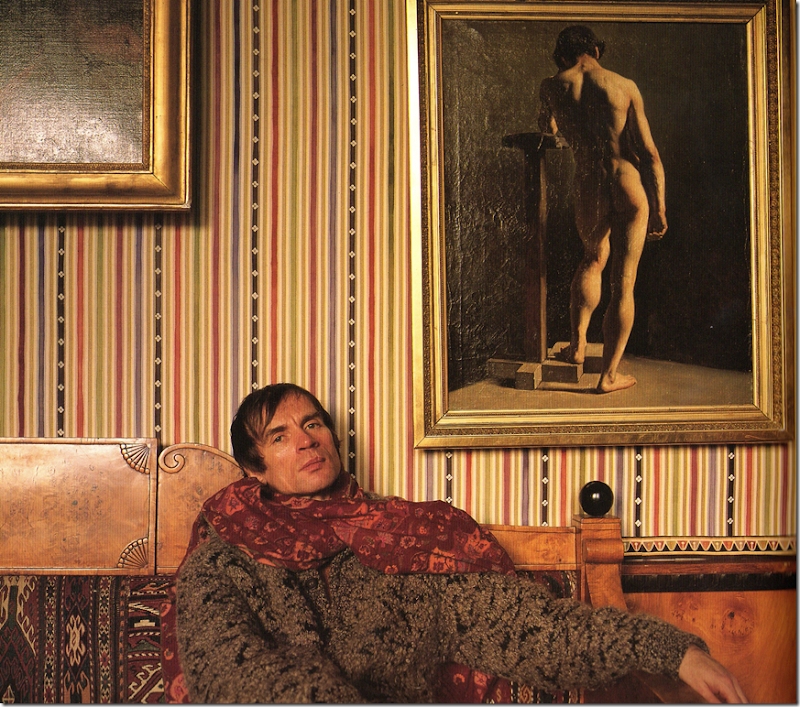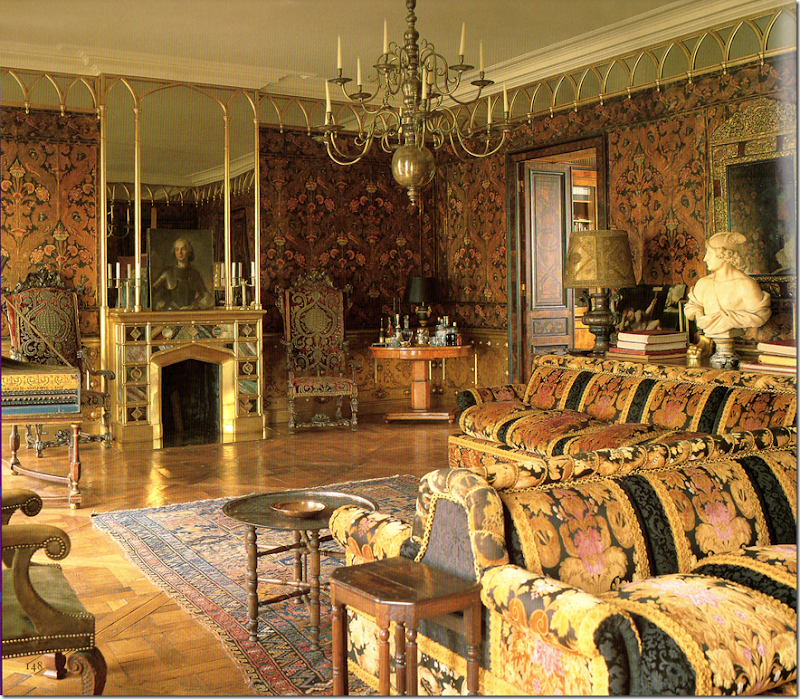Three islands (with a small 4th and an extra rock) make up the grouping off the coast of Positano, Italy known as Li Galli. The Roman tower seen on the middle of the island dates from 12th century, while the other two main houses and chapel date from the early 20th century.
The islands have strong ties with Russian ballet. Here, the Russian dancer and choreographer Leonide Massine who once owned Li Galli, stages a ballet off its terrace.
Off the coast of Positano, are three small islands that collectively are known as Li Galli. The islands have a long romantic history dating back to ancient times when the mythological sirens with their lilting voices and music caused boats to shipwreck on its rocks. The earliest known inhabitants, the Romans, built a fort on the largest island. In more recent times, the Russian ballet star Rudolf Nureyev purchased the islands from Leonide Massine, another famous Russian dancer and choreographer. Massine bought the islands in 1924 and built a home there which the architect Le Corbusier later refurbished. There is an interesting documentary starring Massine where he shows off his island and talks about his life HERE. Nureyev’s emotional ties to the island were strong for historical reasons: Massine had purchased the island from yet another Russian choreographer Diaghilev - making Nureyev the third Russian choreographer to own the islands.
Nureyev had planned to open a ballet school on the island but died of AIDS before his dream was fulfilled. Here, he practices on the island’s terrace, using the fence as a barre.
Massine sold his islands to Nureyev in 1989 for 3 billion Italian liras. The Italian resort was just one in a long line of properties Nureyev owned. During his lifetime, he also owned a farm above Monaco, the Parisian apartment and the NY apartment in the Dakota. There was a house near Richmond Park and a farm in Virginia, and finally a villa on St. Barts. When he bought Li Galli, it had been uninhabited for over a decade and he enthusiastically began to restore it, installing a helicopter pad and buying furniture and building supplies. He purchased a gilded bathtub in Paris that arrived on the island dangerously swinging from a helicopter. Massine had installed a dance studio in the tower, which Nureyev made good use of. He planned to open a ballet school on the island, given its remarkable Russian ballet roots, but it was not to be. He built an underground mausoleum in memory of his mother where he spelled out her name in tiles using Arabic motifs. Although he put his energies into the updates, according to a biographer, the construction on Li Galli was never finished because he was too cheap to pay for all the needed repairs. Much of his last months were spent on Li Galli. Once, he was found, sick, laying on the floor atop one of his beloved kilims. His wish was to be buried on the island, but that idea was squashed as plans to sell Li Galli were started before his death. Eventually the property was sold to an Italian hotelier - Giovanni Russo. Russo has spent the past 15 years remodeling the houses on the islands, completely decorating every bedroom, bathroom, and public area. Recently, he opened Li Galli for rentals.
Given its strong ties to the ballet world, the current owner continues to host dance events. This summer, the Houston company Dominic Walsh Dance Theatre performed on the terrace overlooking the Amalfi coastline of Italy.
Today, the Li Galli islands are available to paying vacationers for the first time. After spending 15 years using the islands as his private retreat, Russo has opened the doors to guests who arrive either by boat or helicopter. There is a salt water swimming pool and a 115 ft. yacht that is available for guests, at an extra charge of course. You have your choice of six bedrooms: two in the large Villa Giovanni, two in the ancient Tower, and two in the charming White House which sits next to the chapel where weddings take place. All meals are provided using fresh vegetables and fruits grown on the island along with fish caught off the coast – it must be so delicious. In the summer at the height of the season, the island cost 130,000 Euros a week; during the other ten months, it’s a bargain at only 100,000 Euros. Oh, and your bed linens and towels are changed daily – for that kind of money that should be unsaid.
In this aerial shot, you can plainly see the ancient tower with the terraced side of the island leading down to the sea. In the middle is the large, peach colored Villa Giovanni. At the left, is the smaller White House with the Chapel next door. Scores of boats from the mainland circle the historic islands taking pictures.
In a closer view, the small chapel can be plainly seen at the very left next to the White House. The peach colored Villa Giovanni is to its right. Only the top of the tower can be seen.
The boat launch sits under the tower.
In this gorgeous photograph, the tiny chapel stands over the rock steps which lead down to the sea.
On this map you can see the islands are located close to Positano, Naples and the Island of Capri.
House and Garden photographed Li Galli in 1992, shortly before Nureyev’s death in 1993. Here he sits wearing a shawl and hat, on a table topped with his beloved kilims.
Each room in the villa is covered in tiles. This room is filled with a numerous versions of blue and white tiles.
Nureyev’s bedroom is also tiled and covered in kilims. But, the most amazing items are the oversized lamps!!
A rare shot of Nureyev taken by a friend inside his tile lined Li Galli villa.
The helicopter pad sits right under the tower.
Villa Giovanni in peach. The White House and the chapel are to the left. Each house and the tower has two bedrooms for a total of six.
Villa Giovanni:
The terrace of Villa Giovanni.
The open air entry to Villa Giovanni.
The main living room at the peach villa.
The game room at Villa Giovanni.
And the library at Villa Giovanni.
Whoa. A completely tiled bedroom at Villa Giovanni.
And looking out the towards the dining terrace. Amazing. Unfortunately, none of these interiors match up to the ones from the House and Garden photoshoot.
The bathroom is also completely tiled.
In a change of pace, the kitchen is tiled in green instead of blue and white.
The dining terrace’s floor looks like a swimming pool. I love those vintage chairs! What a romantic place to eat dinner.
The pizza kitchen at Villa Giovanni.
The Tower:
The salt water pool is outside the ancient tower.
The living area of the tower with a set of drums in case Ringo Starr shows up.
The tower’s kitchen has a bold yellow Le Cornue stove.
The main bedroom in the tower is bright yellow – to match the stove??
One of the tower’s bathrooms. I wonder what happened to Nureyev’s gilt bathtub?
The White House and Chapel:
The White House overlooks the chapel.
This bedroom in the White House is called the Honeymoon Suite. Notice the floors are wood here, not tiled.
The White House’s bathroom – with a great antique gilt mirror. Notice how the yacht just happens to be in view out the window.
The White House and the chapel stand next to the stone steps leading to the water.
The chapel holds only 20 people, so large weddings have to take place outside on the terrace. The same white tiles used in the main villa Giovanni are used here.
Russo’s yacht which available for the guests to use – at an extra fee, of course!
The main stateroom inside the yacht. Amazing!
ISlE ISCA:

A fourth island, Isca, is considered part of the Li Galli group, but ownership of this fourth island is separate from the other three. Here through a group of rocks, you can see Isca.
Isca is home to many Roman ruins and the house itself was built on the foundation of ruins. While Li Galli has ballet roots, Isca has literary roots. The famous Italian writer and actor Eduardo de Filippo owned Isca and built the house on it – the only flat portion of the island. On the island is a grotto called the Sapphire Cave, similar to the nearby Blue Grotto. It is considered one of the top ten diving spots in all of Italy.
Part II on Italy, next time!!
Be sure to listen to the new Skirted Roundtable when Linda, Megan and I discuss the rash of new digital design magazines. We are having a great giveaway this week! Go to www.skirtedroundtable.blogspot.com to enter!!!

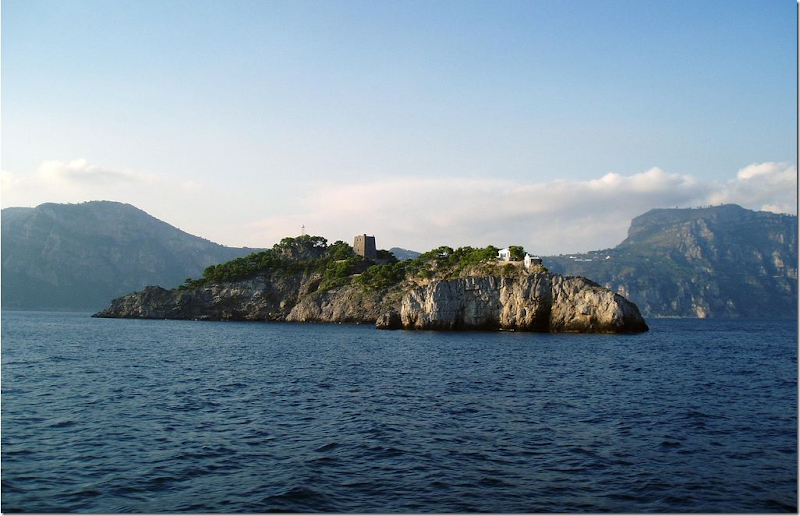
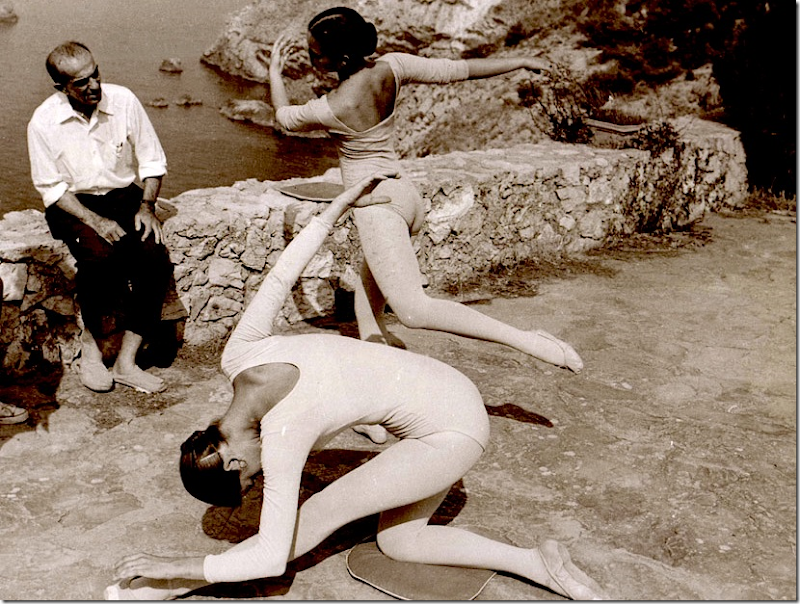
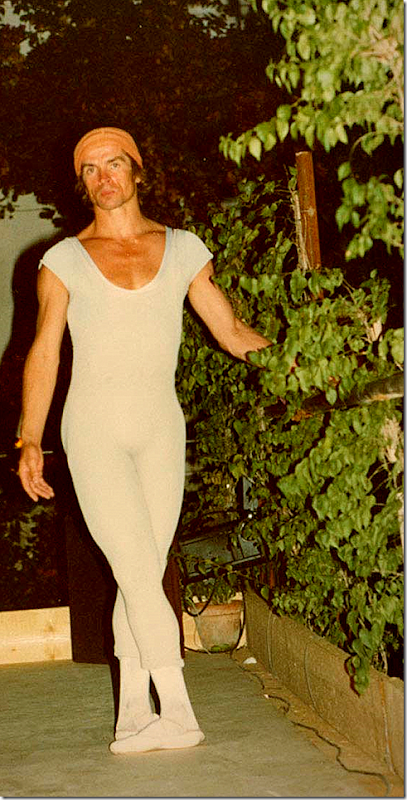
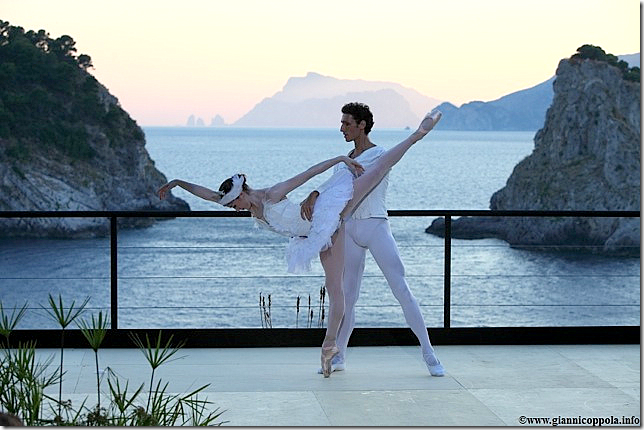


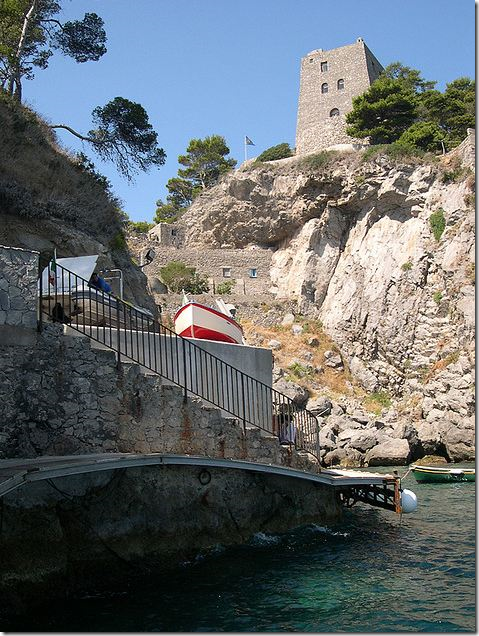


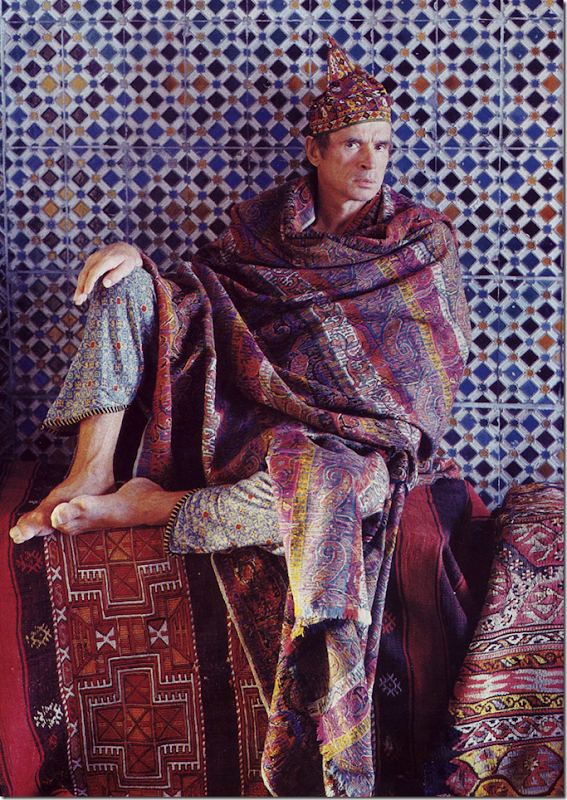


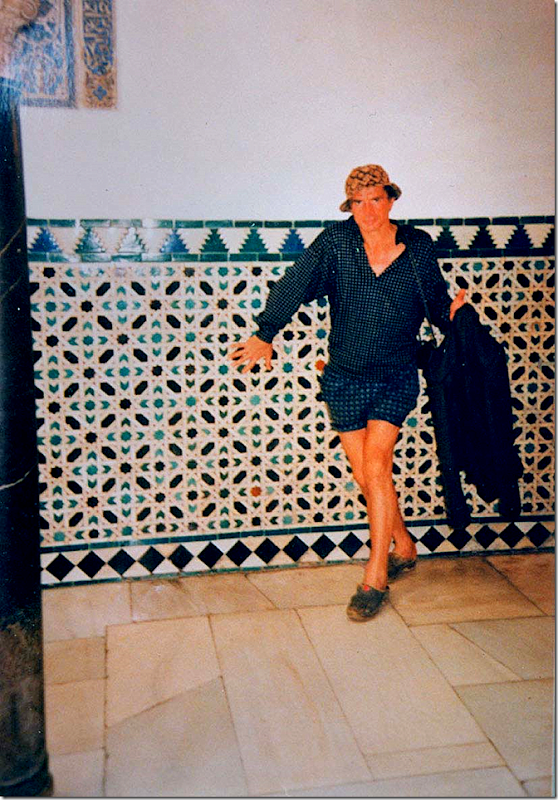
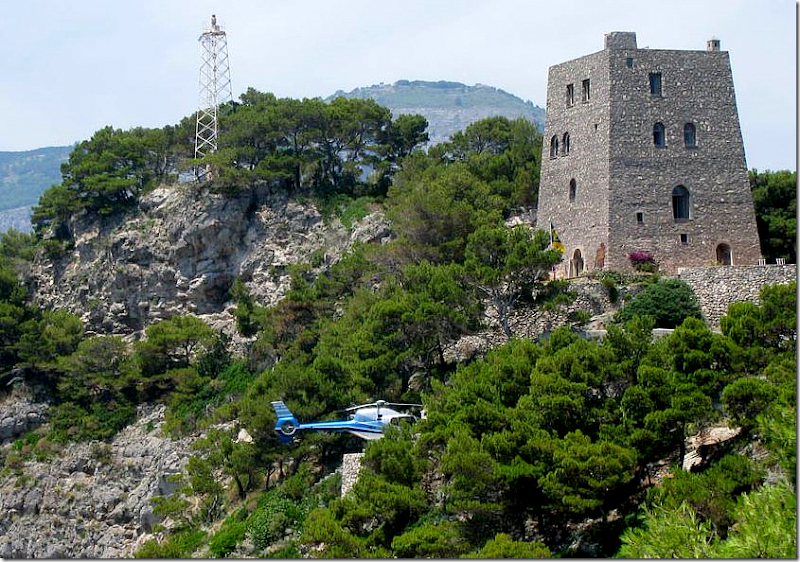
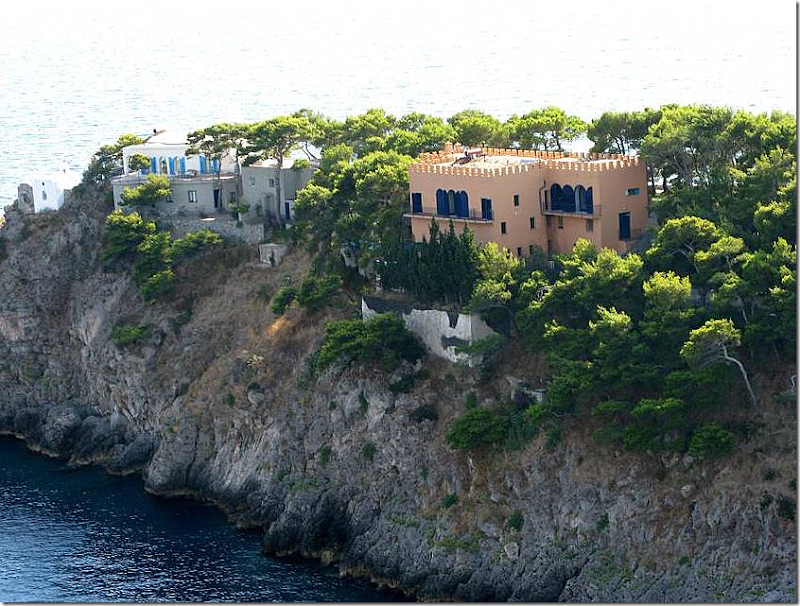
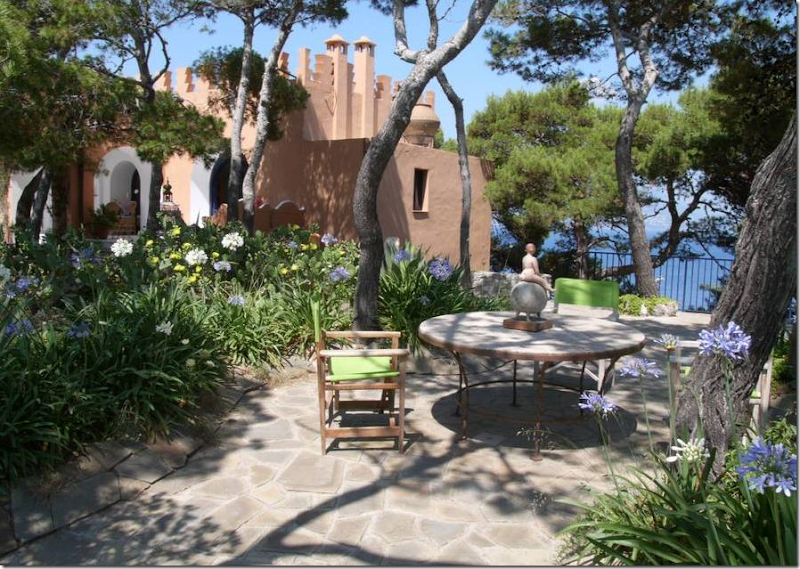


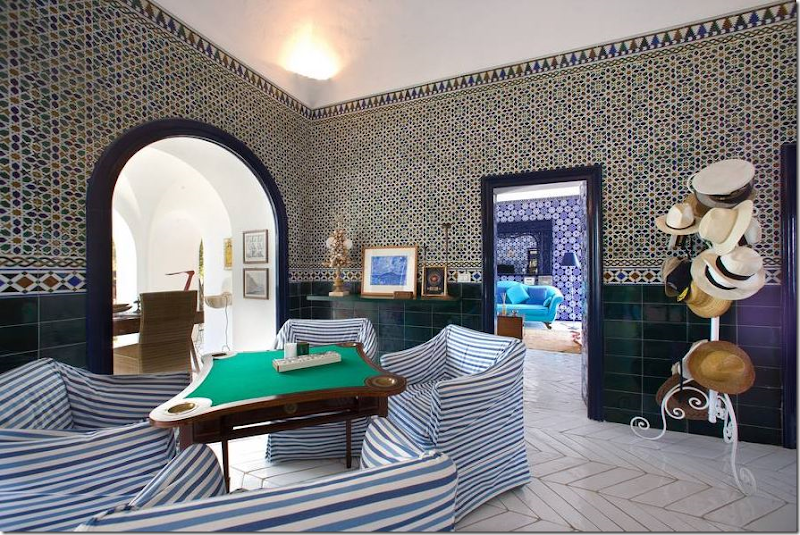
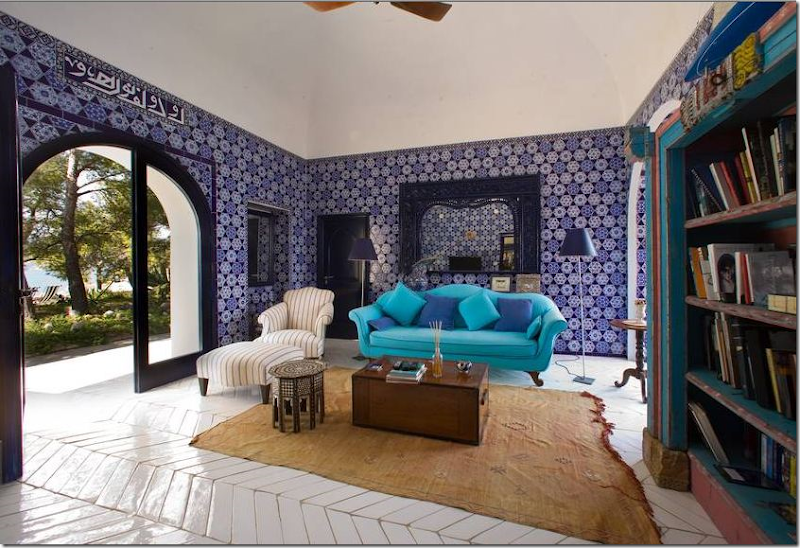
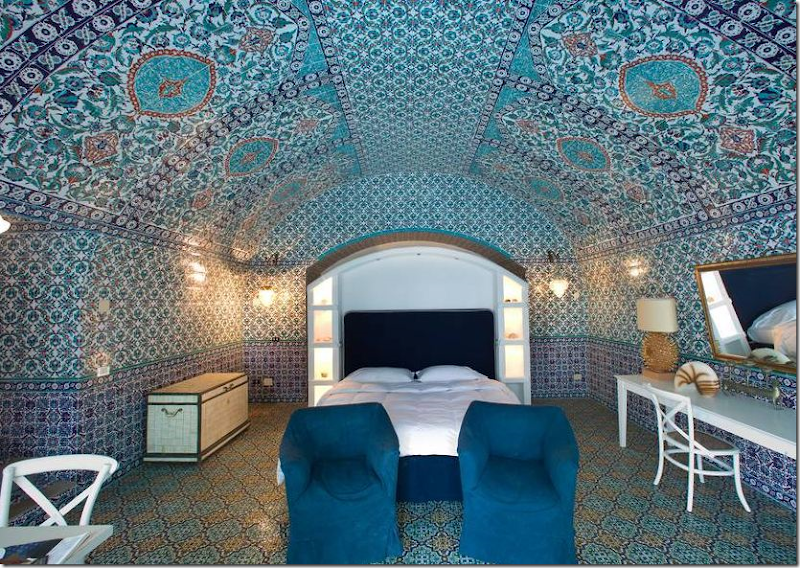
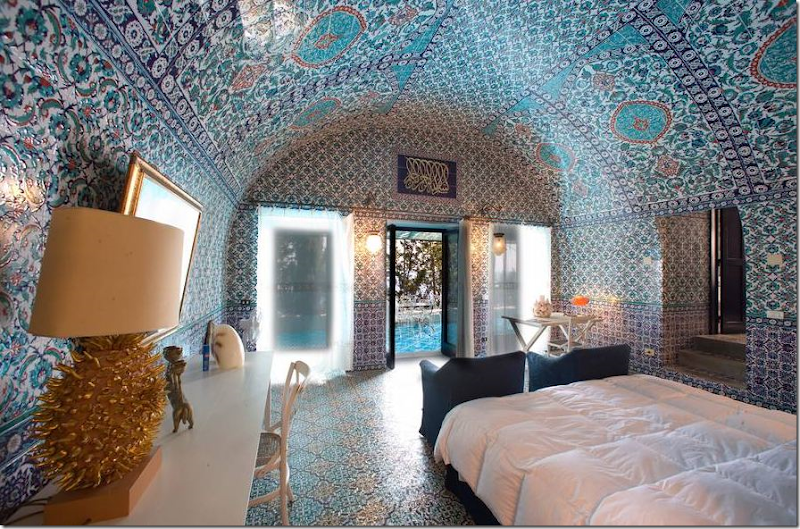
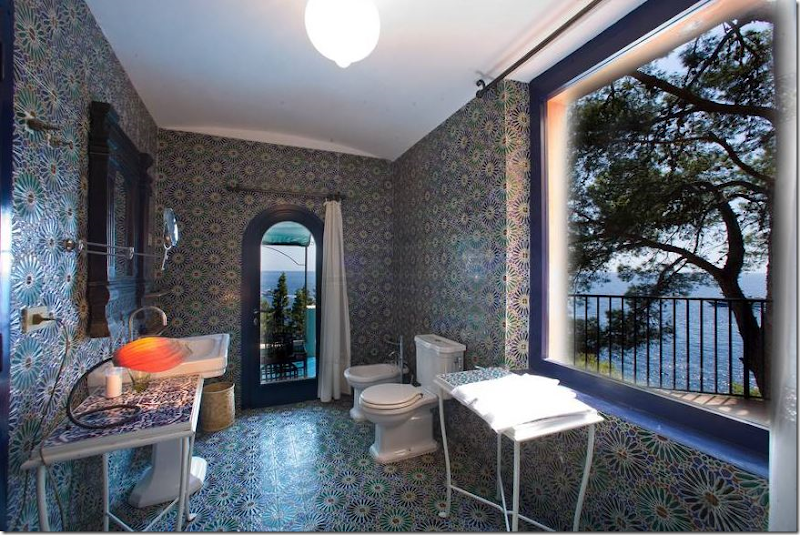
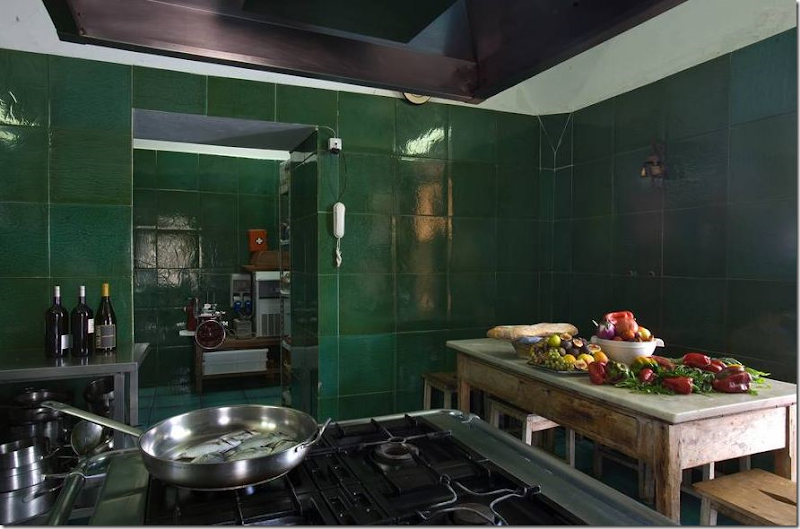
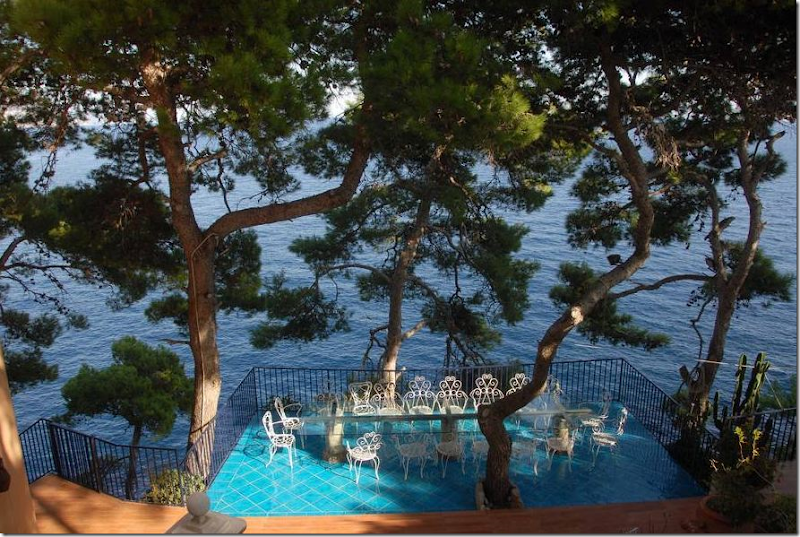
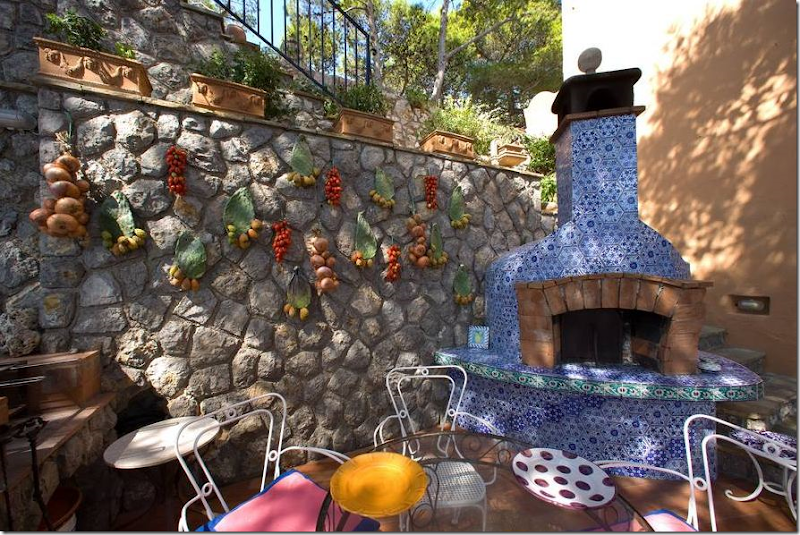
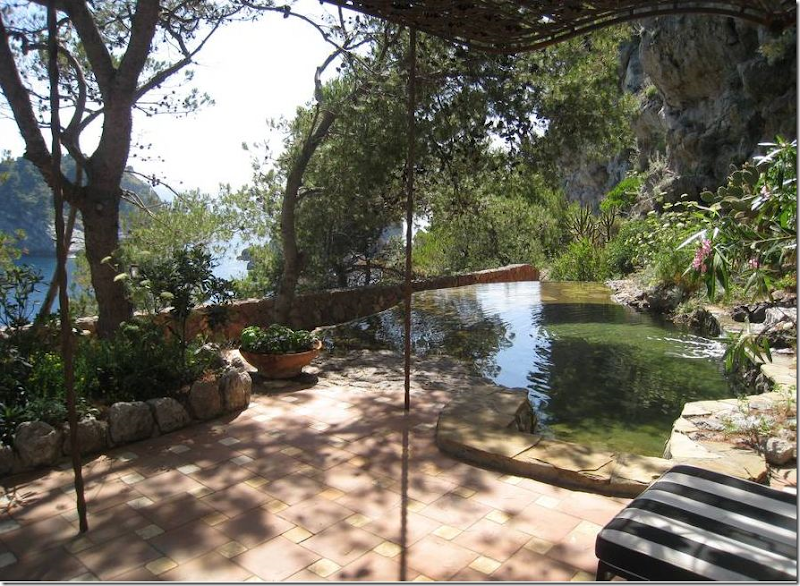
















![P1180429_thumb[1] P1180429_thumb[1]](http://lh3.ggpht.com/_t8-Y4w1UKrc/TObzpJeszUI/AAAAAAAA768/Ub8TK5X7yUI/P1180429_thumb1_thumb.jpg?imgmax=800)




